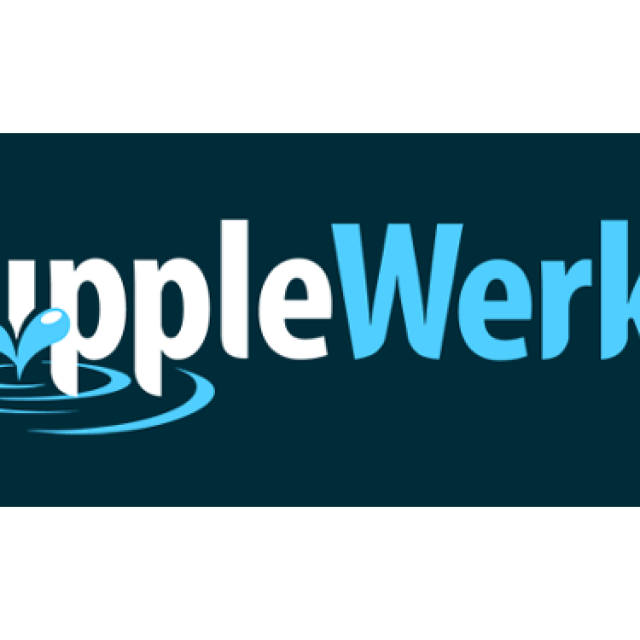Most contractors have signed a contract at some point in their lives before establishing a company, but the types of contracts (and related and documentation agreements) employed by companies to the “transactional” trade every day are new to most entrepreneurs.
We will walk you through what you’re likely to run into in the first year of running a company online. We are not lawyers, and rely on your counsel for a legal opinion, but this will help you hopefully have a more productive discussion with your lawyers about what documents you need written.
Letters of intent
A “letter of intent” (LOI) (sometimes called a “Memorandum of Understanding” (MoU)) is a tool to sell. Some of them are contracts on their own; some of them are not. The point of them is to force the two sides to agree on approximate terms on paper, producing engagement signal to make a deal, without actually agree on a deal.
LOIs are extremely useful for businesses. Some scenarios:
An entrepreneur may want to sell some of their business to another company. This sale very likely require “diligence” – an in-depth inspection of the books, records, and the capital led by the purchaser process. The coach can be extremely disruptive to operations from day to day business, and is something that companies do not want to offer simple tire players. In addition, diligence expose potential buyers to sensitive information marketing business.
As a result, sellers try to sign LOIs with potential buyers, which soft-commit the buyer to buy “contingent on the successful completion of due diligence. “These often include (or be paired with) non-disclosure agreement which prohibit the buyer to use or make public information they receive from the seller in the diligence.
It is clear that gets the recipient of this provision: access to detailed information about the capital, they would not get off the LAW. It is less clear what gets the seller. Typically they preload part of trading in the discussion about ACT-ask the buyer to provide to commit to consecutive terms of supply as the price or timing. This comes with an understanding: the violation of the LAW leaves neither one nor the other party with recourse to a court of law, but the assumption is that trying to rape slay negotiations about the sale real.
LOIs are also a good market signal, but real effective interest by obtaining a done deal. It is very, very easy for a lot of people in any society to say yes to a meeting and say a number of resounding positive things at this meeting. “It sounds like a great idea! “May be the least expensive to grow sentence in English. Forcing produce a formal document, however, active pulses in real companies as legal services and company executives. The legal department of a reputable company does not sign documents just to be polite.
For related reasons, Lois are extraordinarily helpful for the client development. Many internet companies begin without a clear vision of what they are building. If you talk to potential customers about their problems, they will often describe them in great detail. If you say “want to solve your problem with the software,” then they will often be very supportive of that, out of a combination to reflect your enthusiasm and wanting to be polished. But that does not mean they actually buy.
It is difficult to sell the software that do not exist for six months, and many entrepreneurs are not comfortable doing so. It is far less difficult to simply ask your prospective customer a soft commitment as a LAW. “Great, I’m glad you like the idea. You will agree on an ACT where after us to deliver this in approximately six months, you are committing to a pilot of 3 months at $ 1,000 per month tracking $ 5,000 a month to conduct if the pilot is successful? ”
The conversation around the often LAW discover things that simply talking about the problem does not. For example, the prospective client might say, “Oh, wait, I do not have the budget,” which feels like a painful thing to hear but are actually a step very useful in conversation. You can request that that their company has the authority to purchase / budget, how can they get the budget, that they would describe this software as something budge table (a feature that put another team save ? a service component?), etc. You could also just move you find a client that can actually buy your software.
Many companies died because they have established something that nobody wanted to buy. Your company should not be one of them. Ask LOIs or other clear indications of interest and supported before building your products; produce only things for which you have been able to successfully find the potential buyers.
Main Agreement services
In general, companies selling two things: products or services. The products often do not have a very detailed contractual story to them: you pay your money, you get your product, the end. (Your lawyer will tell you that there are excellent conditions for substantial contracts around the sale of a product. Take their advice over this generalization.)
Services, on the other hand, almost always are governed by contracts, and contracts become very extensive. Larger companies often have preferred contracts (sometimes called “the [our] paper”) that anticipates their core concern by buying services and ensure that the provisions they want are in contracts. Smaller companies may, on the other hand, prefer to work off their paper sellers.
Since adapt a contract to customer needs for every possible services that commitment (many of which are different from each other) would be unwieldy, the services industry often divide their contracts into two parts: a service agreement master (MSA) and one or more working relationship (RTD).
The precise line between what terms within its MSA and what terms within its RTD depends on how his lawyer or lawyers of his client, decide to draw them. Usually the details about the full scope of relations entering MSA details about the particular project falling within the RTD.
Work Reports
Work reports (RTD) is used by many services companies, when paired with MSAs, to reduce the complexity and cost of negotiating contracts with a core contract negotiated in the past (MSA) and then attaching different supplements (RTD) for the commitments, projects, etc. discreet. The RTD contracts are subject, and the review and negotiation of contract, but they are usually less controversial than MSA.
Sows usually include agreement about:
- Scope is that work needs to be done
- Benefit-specific identification of what should be given to the customer
- Price it either a single number or a rate (per unit, per employee week, etc.)
- Timeline-when key milestones are due for work
- Acceptance-what constitutes “good enough to get ‘paid work and what constitutes a defect that needs revision
The acceptance criteria are one of the most important commercial terms and among the easiest to overlook. For example, if the acceptance is based on an officer called your customer send you a written acknowledgment that they have inspected the services provided, language and defaults to the non-acceptance: Unless this manager works (inspection) your name, your job does not get admitted. You can ask your lawyer to give you the language which defaults on acceptance. In this model, you give your customers limited time to lodge a written objection to services provided after the expiry of which they “will be considered admitted”. This puts the responsibility on your client to check your work in time.
This is much more reliable to get your work accepted without problems, and changes the tenor of the customer interaction. Instead of harassing someone you need good relations to indicate “please drop down what you do and look at this thing to make me; I want to get paid, “simply sends you reminders polite” Hey, just a quick note: remember to have until Friday to lodge any objections if you need. This is just to your advantage; if you have no objection, no action required. ”
Invoices
So you’ve done the work and want to get paid. How customer ask yourself a good money? With an invoice.
A bill is simply a formal written request for payment. Since the presence of them is used as a control factor for many companies, especially the larger ones, you’ll likely publish. The exact format is far less standardized in the United States it is in many countries.
Typically, an invoice will include:
- A specified list of goods or services purchased, with minimal detail about them
- A unit price and quantity for each line item
- Subtotal
- Any sales tax assessed
- The total amount charged
- The total amount actually due, if not the same as the amount was charged (i.e. d. If the customer has already paid part of the bill)
More:
- Your address
- Name and address of your customer
- Payment Terms
- Instructions payment method
- A number of PO if you were provided
The most of this are quite explicit. Exceptions:
Number of Poi you do business with larger corporations or government agencies, they could have you issued a formal purchase order (PO), which is tracked with a number of OPs. They will not pay any bills unless it has the number of PO it. This is a person controlling it from accounting working in accounts payable has no personal knowledge that your payment request is authorized or not, so they will want to see that pre-authorized by someone within the organization (through a purchase order that they can look) before you send the payment.
Payment Terms: Helping your client, you usually put the payment terms (which were negotiated and MSA or RTD) on the bill. The most common payment term is “NET 30”, which means that the bill is due in 30 days of the date it was published. The companies not paying bills on time is extremely common in the USA; this is one reason why the nudge customers use credit cards or similar to the time the order is so popular.
Method of payment: Companies that pay bills overwhelmingly want you to pay with checks. You do not want to accept payment in test, and so probably includes payment instructions, such as “please pay us via ACH using the following information:” This statement will be neglected by habit and you will receive a check in mail anyway, to any address you wrote on your bill. For this reason, you should be careful to put a working address on your bill.
US bills not usual identity numbers or anything concerning business include VAT taxes. Many Internet companies doing business around the world ask their customers “is something that we should put over your bill? “ European companies generally ask their VAT number to be on it for compliance with tax obligations.
It is not common to issue invoices for payments that were already made (a receipt is generally more suitable for this purpose), but if you do, you should put the amount paid, the date paid, and a notation for to the processing entity know they must pay nothing further.
A whim of several of your customers: people expect the bills look like official document And putting your logo on them, provide them as PDF, and putting a little work into the design will more likely they are accepted as simply providing the same content as the plaintext. Some of your customers ask you a “real” invoice even if they have all the information to you as clear text already.
Receipts
Customers, particularly business customers rely on companies to help them to organize their finances. You should offer customers a written receipt for every transaction with you, especially for transactions that are arranged immediately (via, for example, a credit card) or otherwise not billed.
Receipts are formal documents, but even low-ceremony that the bills are in the United States.
Typically, you write about them:
- The Name and business adresse
- A specified list of what was purchased, in the minimal detail
- Subtotal
- Any sales tax assessed
- The total amount paid
- The date and time of the purchase
You can add on option:
- How the payment was made (the “credit card with the latest 1234 figures” is common)
- The customer name
- A reference number for you to find the transaction later
- Instructions for the customer if they have a question about the purchase
If you sell to consumers as opposed to businesses, but some of your customers are actually buying for business use, they often “expenses” purchases to their employer. Their employer will need a receipt for this process. This can, depending on your business, be a core reason use receipts. Many of these customers will want that received “official seems” so as invoices, with something that is “not just plain text” can be useful to reduce the number of inquiries you get about your receipts.
Customers frequently lose receipts. If you have persistent relationships with a client, it’s a good idea to keep a copy of their receipts in their account on your website / online store / etc. This will troubleshoot them, and save your team from having to answer a lot of questions of a general nature “I need a receipt for my purchase my class taxes. I think it was back in July. Can you help? “
















